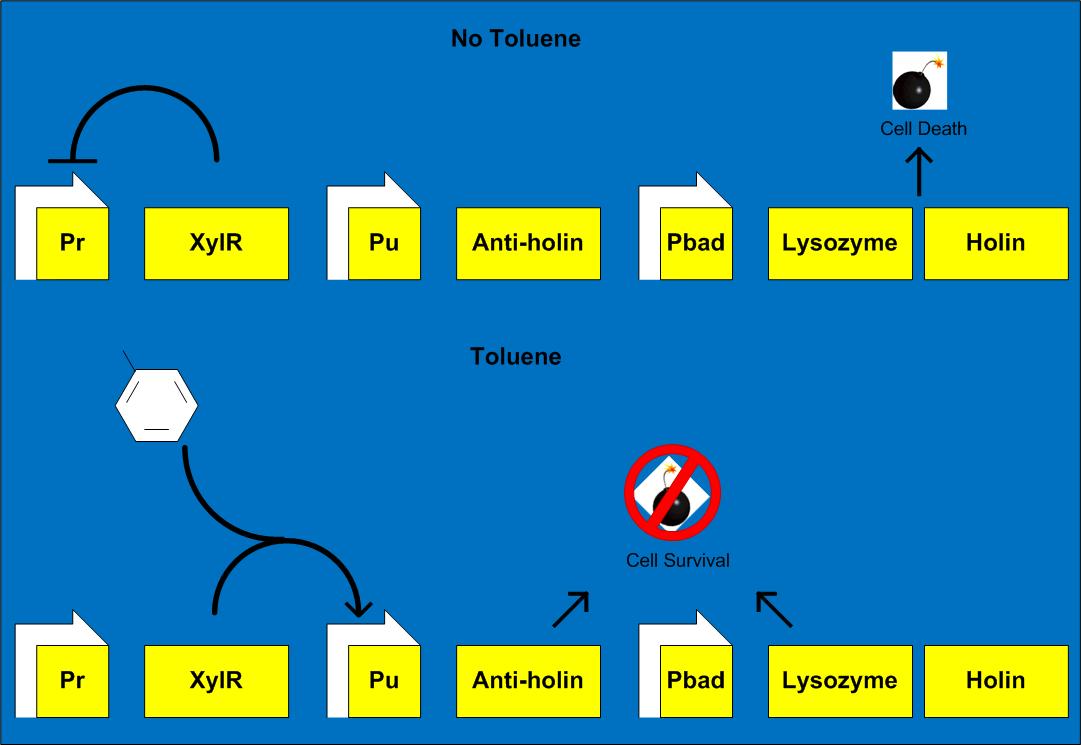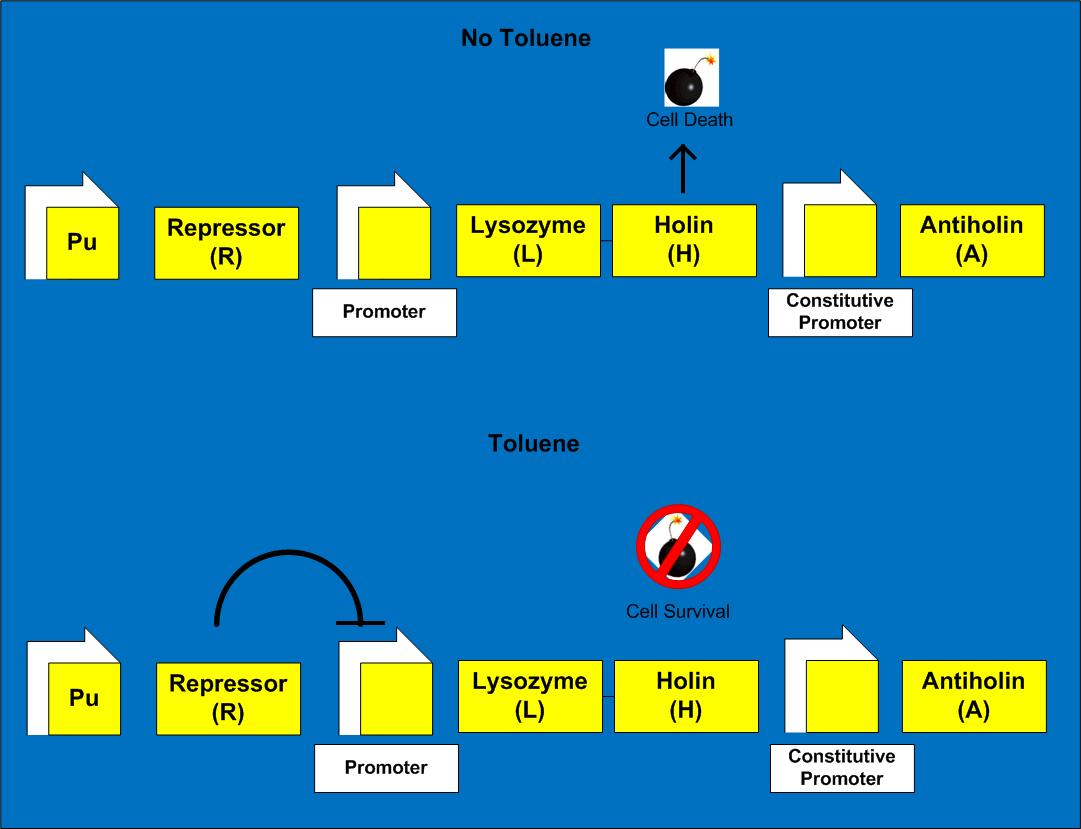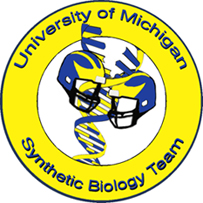Kill Switch

Kill Switch with Tunable Repression

The Toluene Terminator is a
Pseudomonas device that aims to identify the toxic compound toluene in an environmental setting (e.g. a spill into soil from an underground petrol tank), move to and uptake it, metabolize it, and destroy itself when all of the toluene has been metabolized. This device will require four basic modules: toluene chemorecognition, chemotaxis, toluene metabolism, and a suicide mechanism. This year we have been working on toluene metabolism and the suicide mechanism.
The goal of this project is to work with the toluene degrading abilities that already exist in P. putida mt-2 (ATCC 33015) on the pWW0-TOL plasmid. The pathway on this plasmid is comprised of the upper pathway where toluene is metabolized into catechol and the lower, meta-pathway where catechol is converted into acetaldehyde and pyruvate. The regulation of toluene degradation on the pWW0 plasmid is presented below.
 The image is adapted from Burlage, R. S., S. W. Hooper, and G. S. Sayler. 1989. The TOL (pWWO) catabolic plasmid. Appl. Environ. Microbiol. 55: 1323-1328.
The image is adapted from Burlage, R. S., S. W. Hooper, and G. S. Sayler. 1989. The TOL (pWWO) catabolic plasmid. Appl. Environ. Microbiol. 55: 1323-1328.
Upper Pathway
The Pr (regulator) promoter is a constitutive promoter in P. putida mt-2 and expresses the XylR regulator protein. When there is no toluene in the system, the XylR protein acts as a repressor for Pr to prevent leaky expression. When toluene is present, the toluene binds with the XylR regulator protein to create a complex that activates the Pu (upper pathway) promoter and starts to degrade toluene. The upper pathway enzymes XylA, XylB and XylC degrade toluene into catechol.
Lower Pathway
The XylR-toluene complex also activates Ps, the promoter that expresses XylS which is the protein that regulates the lower meta-pathway. XylS regulates the lower pathway Pm (meta-pathway) promoter by itself or complexed with benzoate, a product from the upper pathway. When activated Pm expresses Xyl D-L to finish degrading toluene.
Sensing Toluene
Our project is aimed at characterizing the promoters in the pWW0 plasmid to sense when the toluene degrading process is finished, signaling the cell to commit suicide. The promoter we chose to sense the presence of toluene is the Pu promoter. In order to characterize this promoter we created Bba_XXXXXX, a device that has the Pu promoter expressing GFP. To have this device function in strains other than P. putida mt-2 that already contains the XylR regulating protein, the part Bba_XXXXXX was created from the Pr XylR portion of the pWW0 plasmid to regulate the Pu promoter. By combining the functions of these two parts, the intensity of GFP can be used to measure the promoter activity when induced with non-lethal level of toluene.
Suicide Mechanism
The Terminator's suicide mechanism, or kill switch, operates through the T4 phage's holin genetics. The suicide operon consists of an arabinose-dependent promoter controlling expression of the holin and endolysin proteins, followed by the Pu promoter controlling the antiholin gene. This way, none of the genes are activated until the device is released into the contaminated area, along with a quantity of arabinose. This results in the arabinose-mediated expression of the lytic genes holin and endolysin, as well as the toluene-mediated expression of antiholin, which posttranslationally inhibits the lytic proteins. Then, when the toluene disappears (when it is all metabolized) from the local region of the individual device, antiholin is no longer expressed, allowing the lytic proteins to destroy the cell.
 "
"



